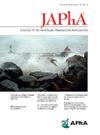Utilizing pharmacists to bridge gaps in contraceptive care: New Mexico as a case study
IF 2.5
4区 医学
Q3 PHARMACOLOGY & PHARMACY
Journal of the American Pharmacists Association
Pub Date : 2025-09-14
DOI:10.1016/j.japh.2025.102926
引用次数: 0
Abstract
Hormonal contraception, both daily and emergency use, has played a central role in reproductive care to prevent pregnancy, reduce the need for abortion, and manage medical conditions. Contraceptive access is a longstanding issue that carries personal, social, economic, and health-related consequences. Approximately 45% of all pregnancies each year in the United States are unplanned, with individuals of lower income experiencing rates 5 times more than those with higher incomes. Rural populations face additional challenges, including higher rates of adolescent pregnancy and limited access to care. New Mexico (NM) will serve as a central example in this commentary on pharmacy access to contraception, as 26 of its 33 counties are considered rural. NM has an adolescent pregnancy rate above national average and high uninsured and poverty rates. In 1993, NM became the first state in the United States to pass legislation authorizing specially trained pharmacists to prescribe under a collaborative agreement with a physician, an early and innovative step toward expanding care in underserved areas. Pharmacy access to contraception is aimed at increasing availability of contraceptives, though significant barriers remain. As these barriers grow across the nation, this commentary explores how pharmacist-led models, using NM as a case study, can be leveraged to improve access to contraception and broader health outcomes in all communities.
利用药剂师弥合避孕护理的差距:新墨西哥州为案例研究。
激素避孕,无论是日常使用还是紧急使用,都在生殖保健中发挥了核心作用,以防止怀孕、减少堕胎的需要和控制医疗状况。获得避孕药具是一个长期存在的问题,会带来个人、社会、经济和健康方面的后果。在美国,每年大约有45%的怀孕是计划外的,低收入人群的怀孕率是高收入人群的五倍。农村人口面临更多挑战,包括少女怀孕率较高和获得保健的机会有限。新墨西哥州(NM)将作为本评论中关于药房获得避孕药具的中心例子,因为其33个县中有26个被认为是农村。NM的青少年怀孕率高于全国平均水平,未参保率和贫困率也很高。1993年,NM成为美国第一个通过立法授权受过专门培训的药剂师在与医生的合作协议下开处方的州,这是在服务不足地区扩大护理的早期和创新的一步。从药房获得避孕药具的目的是增加避孕药具的可得性,尽管仍然存在重大障碍。随着这些障碍在全国范围内的增长,这篇评论探讨了如何药剂师主导的模式,使用NM作为案例研究,可以利用来改善获得避孕和更广泛的健康结果在所有社区。
本文章由计算机程序翻译,如有差异,请以英文原文为准。
求助全文
约1分钟内获得全文
求助全文
来源期刊
CiteScore
3.30
自引率
14.30%
发文量
336
审稿时长
46 days
期刊介绍:
The Journal of the American Pharmacists Association is the official peer-reviewed journal of the American Pharmacists Association (APhA), providing information on pharmaceutical care, drug therapy, diseases and other health issues, trends in pharmacy practice and therapeutics, informed opinion, and original research. JAPhA publishes original research, reviews, experiences, and opinion articles that link science to contemporary pharmacy practice to improve patient care.

 求助内容:
求助内容: 应助结果提醒方式:
应助结果提醒方式:


